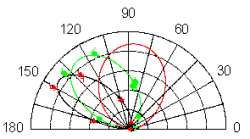Angular Distribution Studies of the Time-Reversed Photoionization Process for decelerated high-Z ions
a)IKF University of Frankfurt (Germany), b)GSI-Darmstadt (Germany), c)IMP, Lanzhou(China), d)HMI, Berlin(Germany), e)KSU-Manhatten (USA), f)INS Swierk (Poland), g)INP Krakow (Poland), h)University of Krakow (Poland)

ATOMIC PHYSICS DIVISION














